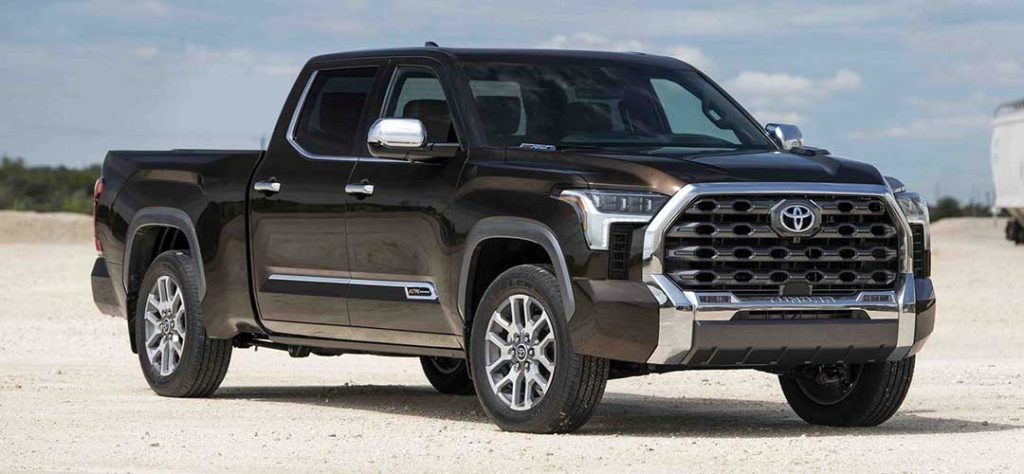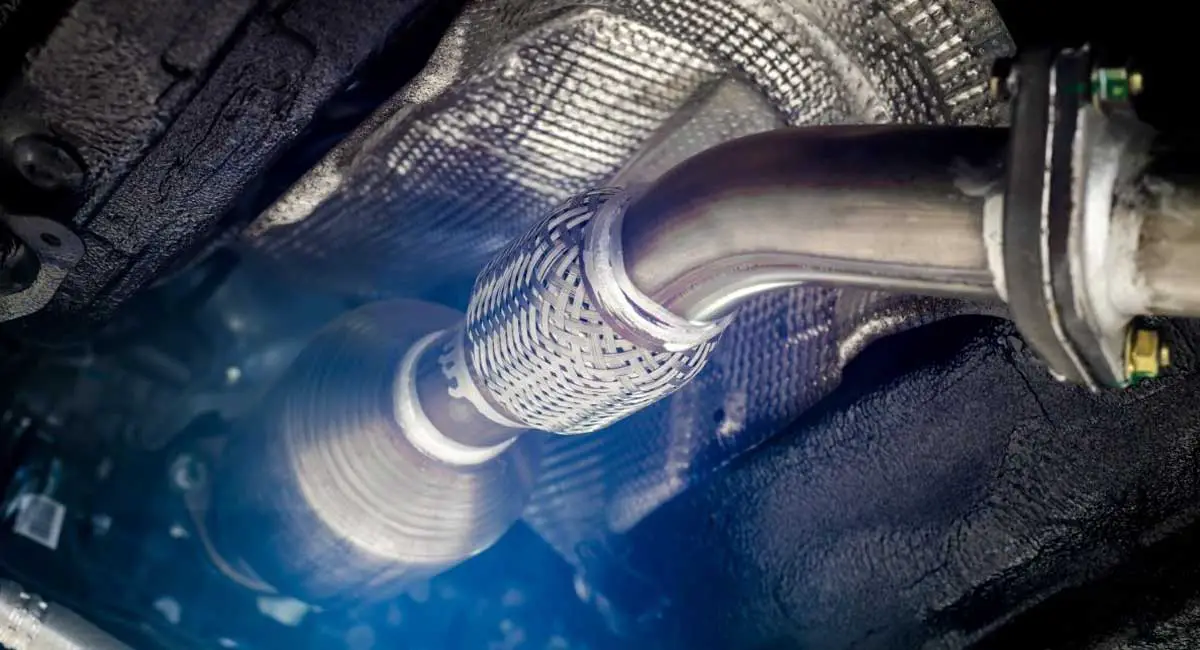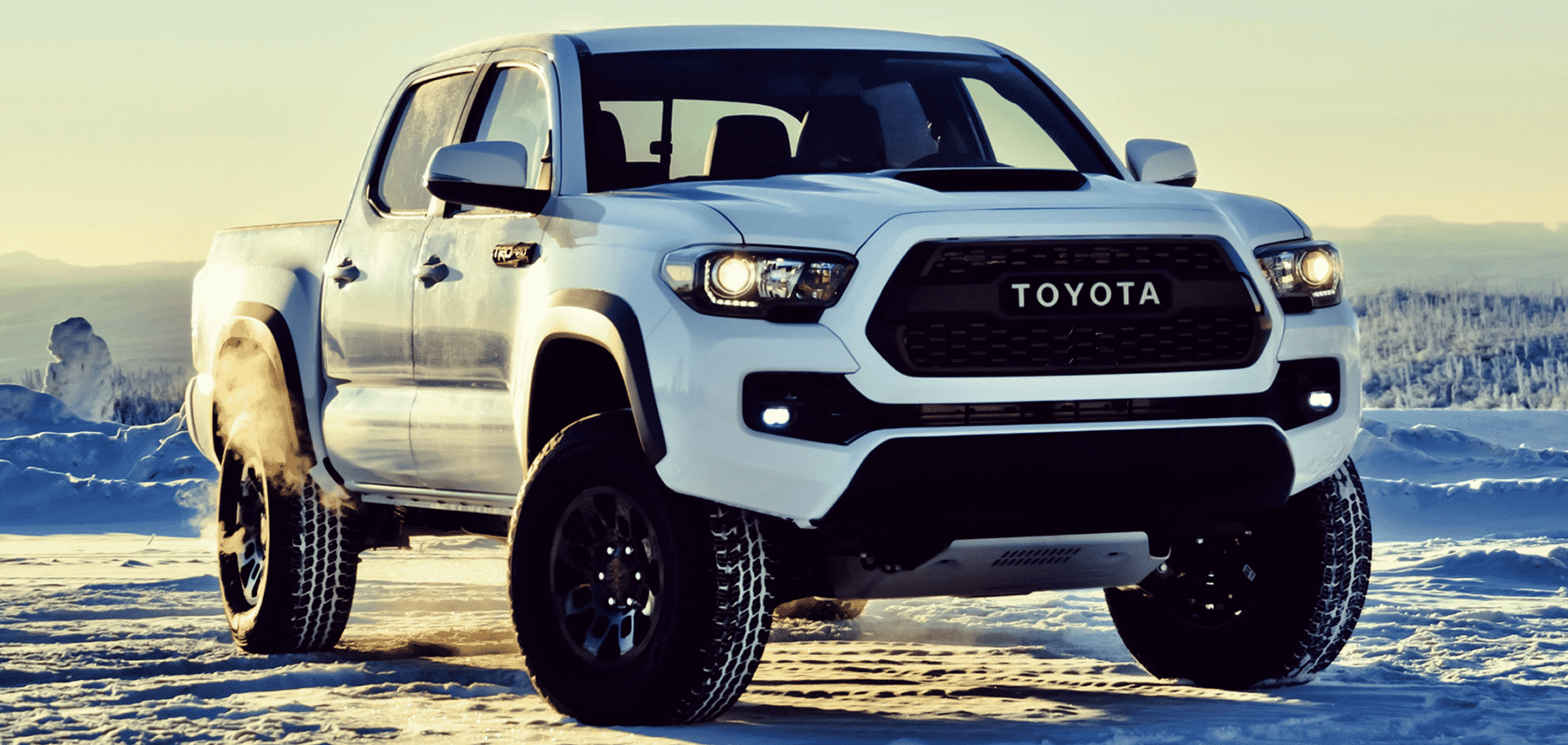The Toyota Tundra is touted as one of the best cars available on the market today, but let’s talk exhaust systems. We may need to modify it to meet our needs with the Tundra, and one of the ways to do that is by altering the exhaust system. The upgrade comes with better performance and feels that will give the car a sportier appeal.
Best Exhaust Systems for Toyota Tundra

In this buying guide, we are going to provide you with an in-depth review of the six best exhaust systems for Toyota Tundra. They have tried and tested performance that will give your experience an oomph. Without further ado, let’s get started!
1. CORSA 14916 Cat-Back Exhaust System

The CORSA 14916 has been made using the patented reflective sound cancellation technology to give you a drone-free exhaust sound. With it, you get an aggressive sound when accelerating and a drone-free sound when you are cruising. This is why we are rating it in our list of the best exhaust systems for Toyota Tundras.
It features a dual-wall design to protect the system against heat distortion. That also ensures that it lasts long. It is made with a premium stainless-steel material for more durability.
The CORSA performance tip kits have been customized to fit the CORSA exhaust systems.
Product Information
- Product Weight: 58 Pounds
Pros
- It can give you a drone-free exhaust sound
- The exhaust gives you an aggressive sound when accelerating
- It has a dual-wall design to protect the system from heat distortion
- The system has been made with a premium stainless-steel material for increased durability
Cons
- Some users complained that the sound they got was different than their expectations.
2. MagnaFlow 15306 MF Series Performance Cat-Back Exhaust System

This exhaust system has been made in accordance with US quality standards and engineered to last you long. The MagnaFlow MF Series, Performance Exhaust systems ensure you get a smooth, deep sound for exceptional performance and power. These great features are what made it one of our best exhaust systems for Toyota Tundra.
It features a straight-through flow design for increased horsepower and high exhaust performance. There is a great balance of both the interior and exterior noise levels tested against the SAE j1169 standards.
Product Information
- Package Dimensions: 147.4 x 36 x 49 cm
- Package Weight: 31.75 kg
Pros
- It is durable
- The exhaust system is easy to install
- It can give you a smooth, deep sound for exceptional performance and power
- The exhaust has been made with a straight-through flow design for a high horsepower
- The interior and exterior noise levels are balanced and matched against the SAE j1169 standards
Cons
- Some users complained it did not last them long
3. CORSA 24916 Cat-Back Exhaust System

This is another great exhaust system that is also great for the Toyota Tundra. It is made using the patented, no drone, reflective sound cancellation technology. Even though it has an aggressive exhaust note, it can still be custom-tuned. It is lighter and flows better than stocks.
It features a computerized, mandrel-bent design for maximum airflow. Its straight-through design impacts its performance. When you buy it, you get detailed instructions on using it to help make the installation process and troubleshooting easier.
Product Information
- Product Weight: 5 pounds
Pros
- It is easy to install
- The exhaust can give you a great sound without a drone
- Its note is aggressive and can be custom-tuned
- The exhaust is light and can flow better than stocks
- It has been customized for maximum airflow and performance
- It is bigger than stock
Cons
- It may not be available in some areas
4. Borla 140332 Cat-Back Exhaust System

The Borla 140332 is made using patented, straight-through, multicore technology. It is made using the 300 series stainless steel, which is superior to the T-400 series in terms of performance and durability.
It is characterized by ultra-smooth mandrel bends for maximum flow and power. The exhaust has an increased exhaust velocity for more power, driving excitement, and fuel economy.
When you buy the unit, you get a million-mile warranty. It will fit the 2009 – 2013 Toyota Tundra vehicles the best.
Product Information
- Product Weight: 64 Pounds
Pros
- It is made using the 300 series stainless steel, which has high performance and durability
- It features patented, straight-through, multicore technology for high velocity
- The exhaust is high characterized by ultra-smooth mandrel bends for maximum flow and power
- The unit comes with a million-mile warranty
- It is easy to install
Cons
- Some users were disappointed with the sound
5. BORLA 140638 Cat-Back Exhaust System

This is a classic cat-back system with patented straight and multicore technology to give you maximum horsepower. It has a high exhaust velocity to give you more power, driving excitement, less fuel, and a distinct Borla sound. An option for one of the best exhaust systems for a Toyota Tundra.
The material entails the premium 300 series stainless steel for high performance and durability. The exhaust has ultra-smooth mandrel bends to give you maximum flow and power. The computer-controlled CNC manufacturing that was done on it ensures that it gives you an accurate fit.
Product Information
- Product Dimensions: 66 x 21 x 13 inch
- Product Weight: 66 Pounds
Pros
- It has a high maximum horsepower
- The exhaust has increased velocity for maximum flow and power
- The CNC manufacturing helps it to have an accurate fit
- It is durable
- The pipes are mandrel-bent for a maximum flow
Cons
- Some users complained it is not loud enough
6. Flowmaster 817708 Outlaw Extreme Kit

This is a great exhaust system for the Toyota Tundra. It features a stainless-steel construction and can really give you a loud sound. It is made using the Race Proven Outlaw Muffler Technology to ensure that it is the best in its class.
Product Information
- Product Weight: 0.32 Ounces
Pros
- It features a stainless-steel construction
- It is louder than the manufacturer’s exhaust
- The system is easy to install
Cons
- It has a sound of 1500 rpm, which is not loud for some people
Buyer’s Guide
If you have a nice car, you must have equally nice fittings on it, including an exhaust system. Any of the six best exhaust systems for the Toyota Tundra that were reviewed above will be a perfect match for your car, but if you are not decided on which one to choose, then continue on to our buyer’s guide, where we distinguish them.
Exhaust with Balanced Exterior and Interior Noises
There is a smooth sound when there is a balance between the interior and exterior noises. In this case, the MagnaFlow Exhaust Products 15306 MF Series Performance Cat-Back Exhaust System has balanced interior and exterior noise levels that have been both tested against the SAE j1169 standards.
Exhaust with Protection from Heat
Heat is the primary factor that makes exhausts burn out. However, some systems have been designed to offer protection from heat, such as the CORSA 14916 Cat-Back Exhaust System, which has a dual-wall design for heat protection.
The Most Inexpensive Exhaust
When we look at the different units’ buying prices, the most affordable is the Flowmaster 817708 Outlaw Extreme Kit, a Base Product that costs less than $400.
Our Overall Recommendation
Though any of the six best exhaust systems in our list would be an excellent choice for the Toyota Tundra, our best judgment is the Flowmaster 817708 Outlaw Extreme Kit, a Base Product that is way cheaper comparatively and will still do the job well.
How to Choose the Best Exhaust System
Though you may already know which exhaust system to choose for your Toyota Tundra, it is also good to know the factors to consider when shopping for one. Some of the factors to always remember when selecting an exhaust system include:
Exhaust Material
Most of the time, exhausts are made using steel. It can either be just steel or stainless steel. Mild steel tends to be cheaper, though it is prone to corrosion and does not last as long as alternative materials.
On the other hand, stainless steel is more expensive but is rust-resistant and is more durable. Stainless steel is an ideal material for holding up to any weather, even rainy and snowy weather.
Dual Vs. Single Exhaust Configurations
The exhaust configuration will alter its performance, and hence, you have to make the right choice. The common configurations are single, dual, dual crossover and dual exit.
The single system is the most common, and it features a single set of components. A muffler characterizes it with an exhaust tip that exits behind the car’s axle. Single systems are generally cheaper comparatively and more lightweight as compared to their dual-rear counterparts.
Contrary to expectation, the dual exit has the same specifications as the single configuration. They have one head pipe, converter, and muffler. The only difference is that the muffler has two exit pipes. The double exit looks sophisticated, but it has no impact on the performance.
Dual systems, as we can infer from the name, entail two pipes instead of one. They have two separate pipes, two catalytic converters, and two mufflers, each with its own exhaust tips. They feel and look sporty, and that makes them popular among performance enthusiasts. As much as it tends to perform better, there are high chances of a pressure imbalance between the two exhaust pipes. The imbalance of pressure can lead to an imbalance of horsepower.
The dual crossover has been made to solve the problem of imbalance of pressure. When the pipes cross each other, exhaust gases can flow freely between them, balancing pressure and eliminating backpressure. They are regarded as the best in terms of performance, though they may need some modifications done.
Exhaust Type
There are three major types of exhaust systems; cat-back, header-back, and axle-back.
Header-Back System
The header-back exhaust system replaces the entire exhaust system components from the head collector all the way to the tailpipes. This gives you a chance to increase the entire exhaust system’s diameter, ensuring more exhaust gas volume flow.
The header-back system’s downside is that it is costly and tends to be more complicated to install since it is more like you are replacing the whole exhaust system.
Cat-Back System
For this, you only replace the exhaust components right from the catalytic converter back. That means that you replace the muffler and tailpipe. It is the most common as it is simple to install but works well in freeing up your exhaust gas flow and giving you more power.
The kind of horsepower you get depends on the catalytic converter design. When the exhaust flow is free, your engine will be more efficient, which will give you an improved fuel economy.
Cat-back systems are known for their aggressiveness in the exhaust note, making them remain with the stock catalytic converters. Cat-back exhausts come in different shapes depending on the make and model. It can either be X-pipe, H-pipe, or Y-pipe.
Axle-Back System
They entail all the possible components from the rear axle to the exhaust tip. Even though the cat-back and header-back systems have so much hype, the axle-back system is equally good. It will give you sufficient power gains over the stock exhaust and is relatively cheaper than the other two systems.
Axle-back systems are easy to install and can give you the performance that you desire.
Exhaust Construction
When it comes to the exhaust construction, it can either be crush bends or mandrel bends. The ultimate goal of any exhaust is to reduce power restriction and free up more horsepower for high performance.
As for the diameter, a bigger diameter permits more airflow through the diameters that are customized according to the engine size, rpm, and application.
Crash bending is a quick and easy technique and is used in making stock pipes. It also tends to be cheaper comparatively. Its downside is that the bends affect airflow and that generally affects the performance.
Mandrel bend is an advanced version of the crash bend. It is where a flexible rod is inserted into the exhaust pipe to help prevent air restriction. When the pipe is bent, the flexible rod inside stops the pipe walls from collapsing. That ensures that there are no restrictions on airflow in the bends.
Price
The price will differ depending on the features and the material used. Stainless steel, for example, will be more expensive as compared to other materials. The more advanced the features it has, the more expensive it will be. It just depends on what you need.
Further Considerations
As you might have seen earlier, many components make up an exhaust system. Therefore, it may help if you define your needs earlier to know what exactly you want to replace and what you want to achieve.
For example, by only changing the muffler, nothing much likely has changed since it will not increase your power if you are looking for power. A muffler is great to change if you are aiming for a change of sound.
The shape and design of the muffler will affect how much sound you get from the exhaust. Straight ones tend to be louder. If you need more power and efficiency, you are better off with a Cat-Back system as it gives you larger pipes and more airflow.
Benefits of Aftermarket Exhaust Systems
Apart from looking all cool and sporty, there are many benefits of investing in Aftermarket exhaust systems. Some of the reasons you should consider them include:
Improved Fuel Economy
No matter how fuel-efficient your car is, you can always make it better. The aftermarket exhaust system will take off any trapped gasses into the air and free up your engine.
The pipes are made such that they are larger or have a muffler for a smooth gas flow. That will optimize the performance of the engine, which will improve the fuel economy. How fuel-efficient the system will be will depend on the exhaust system you invest in.
Increased Power
Who wouldn’t love to have more power? Since the aftermarket exhaust system will provide a fast and large air displacement, your whole system will be efficient. There will be more force and more work done within a short time.
Sound
If you want more sound than the ordinary, then maybe you should consider investing in an exhaust system. Different mufflers on the market will adjust the tone of your car to whatever you desire.
The range of sound you can have is from deep low notes to louder, higher notes.
There are still people who do a muffler delete so that after the catalytic converter, the exhaust is a straight pipe. Even though this may sound cool as it will give you a really loud sound, it may put you on the wrong side of the law in some states.
Conclusion
There is something for everyone in the marketplace as long as you have the right information. The Toyota Tundra with an improved exhaust system will give you a heavenly experience. Don’t forget to check the exhaust systems’ reviews before buying to know the experiences other customers have had.



2 thoughts on “6 Best Exhaust Systems for the Toyota Tundra”
Comments are closed.